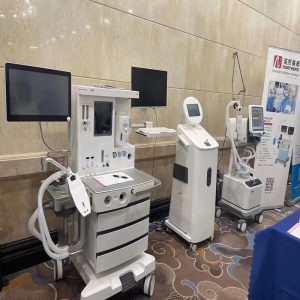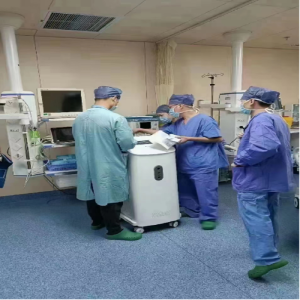Manufacturer Recommendations and Preventive Maintenance Checks
How Often Should the Anesthesia Machine be Maintained?
Anesthesia machines play a critical role in ensuring patient safety during surgical procedures. However, like all medical equipment, they require regular maintenance to ensure their optimal performance. In this article, we will discuss how often the anesthesia machine should be maintained and why it’s important.

Anesthesia machine under disinfection and maintenance
Why is Anesthesia Machine Maintenance Important?
The primary reason why anesthesia machine maintenance is important is to ensure patient safety. Any malfunction or defect in the machine’s components can lead to serious complications or even death. The machine’s failure can lead to inadequate anesthetic delivery, which can cause hypoxia, hypotension, or other potentially life-threatening complications.
Additionally, regular maintenance can help identify and fix potential problems before they occur. This can save time, money, and most importantly, lives. By detecting any issues early on, you can prevent the need for expensive repairs or replacements.
How Often Should Anesthesia Machines be Maintained?
The frequency of anesthesia machine maintenance depends on several factors, such as the manufacturer’s recommendations, the type of machine, and how frequently it is used. The American Society of Anesthesiologists (ASA) recommends that anesthesia machines undergo a thorough inspection and preventive maintenance check at least once a year.

The maintenance staff is maintaining the anesthesia machine
However, some manufacturer recommendations may vary. For instance, some manufacturers may recommend that their machines undergo maintenance checks every six months or more frequently. Additionally, machines that are used more frequently may need more frequent maintenance checks.
What Should Be Included in Anesthesia Machine Maintenance?
During anesthesia machine maintenance, several components should be inspected, cleaned, and calibrated. These components include:
1. Vaporizers: Vaporizers should be checked for leaks, accuracy, and proper filling levels.
2. Breathing Circuit: The breathing circuit should be checked for leaks, cleanliness, and proper function.
3. Flowmeters: Flowmeters should be calibrated to ensure accurate delivery of gases.
4. Pressure Gauges: Pressure gauges should be checked for accuracy and proper function.
5. Carbon Dioxide Absorber: The carbon dioxide absorber should be checked for proper function and replaced as needed.
6. Oxygen Sensors: Oxygen sensors should be checked for accuracy and replaced as needed.
7. Ventilator: The ventilator should be checked for proper function.
8. Electrical Safety: Electrical safety checks should be performed to ensure proper grounding and electrical function.
Conclusion
Anesthesia machine maintenance is critical to ensuring patient safety during surgical procedures. The frequency of maintenance checks depends on several factors, such as the manufacturer’s recommendations, the type of machine, and how frequently it is used. Regular maintenance can help identify and fix potential problems before they occur, saving time, money, and most importantly, lives. By following the manufacturer’s recommendations and performing regular preventive maintenance checks, you can ensure that your anesthesia machine delivers safe and effective anesthesia to your patients.